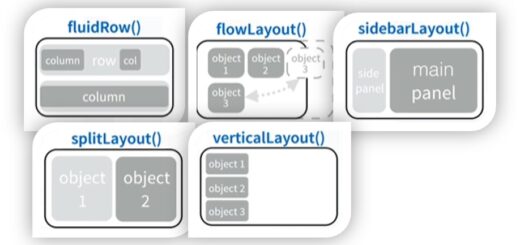How to Calculate Cronbach’s Alpha in R-With Examples
Calculate Cronbach’s Alpha in R, Cronbach’s alpha is a metric for determining the internal consistency, or reliability, of a set of scale or test items.
In other words, a measurement’s reliability refers to how constant it is in measuring a notion, and Cronbach’s alpha is one means of determining how strong that consistency is.
Cronbach’s Alpha is a scale that spans from 0 to 1, with higher values suggesting a more credible survey or questionnaire.
Calculate Cronbach’s Alpha in R
The cronbach.alpha() function from the ltm package is the simplest way to calculate Cronbach’s Alpha.
This lesson shows you how to use this function in the real world.
Example: How to Calculate Cronbach’s Alpha in R
Let’s say a restaurant manager wants to gauge overall customer happiness, so she sends out a survey to ten customers asking them to score the restaurant on a scale of 1 to 3 in a variety of parameters.
Market Basket Analysis in Data Mining » What Goes WIth What » finnstats
To calculate Cronbach’s Alpha for survey responses, we can use the following code.
library(ltm)
In a data frame, enter survey replies
df<-data.frame(Q1=c(1, 1, 1, 2, 2, 1, 1, 3, 2, 1), Q2=c(1, 1, 1, 1, 3, 2, 2, 2, 2, 2), Q3=c(1, 2, 2, 3, 3, 3, 1, 3, 3, 2))
Q1 Q2 Q3 1 1 1 1 2 1 1 2 3 1 1 2 4 2 1 3 5 2 3 3 6 1 2 3 7 1 2 1 8 3 2 3 9 2 2 3 10 1 2 2
Now we can calculate the Cronbach’s Alpha
cronbach.alpha(data)
Cronbach's alpha for the 'df' data-set Items: 3 Sample units: 10 alpha: 0.726
We can also use the CI=True option to get a 95 percent confidence interval for Cronbach’s Alpha:
Cronbach’s Alpha with a 95% confidence interval is calculated.
cronbach.alpha(df, CI=TRUE)
Cronbach's alpha for the 'df' data-set Items: 3 Sample units: 10 alpha: 0.726 Bootstrap 95% CI based on 1000 samples 2.5% 97.5% 0.192 0.886
Cronbach’s Alpha has a 95 percent confidence interval of [0.19, 0.88], as can be seen.
Because our sample size is so small, this confidence interval is unusually large. In practice, a sample size of at least 20 is advised.
For the purpose of simplicity, we utilized a sample size of 10.
The table below shows how different Cronbach’s Alpha values are typically interpreted.
| Cronbach’s Alpha | Internal consistency |
| 0.9 ≤ α | Excellent |
| 0.8 ≤ α < 0.9 | Good |
| 0.7 ≤ α < 0.8 | Acceptable |
| 0.6 ≤ α < 0.7 | Questionable |
| 0.5 ≤ α < 0.6 | Poor |
| α < 0.5 | Unacceptable |
We would argue that the internal consistency of this survey is “Acceptable,” based on Cronbach’s Alpha of 0.726.
Remember that the coefficient of a scale is a function of both item covariances and the number of items in the analysis, so a high coefficient isn’t necessarily a sign of a “good” or reliable set of items;
you can often increase the coefficient simply by increasing the number of items in the analysis.
Linear Discriminant Analysis: A step by step Guide » finnstats
Cronbach’s alpha can be calculated in a variety of methods in R using a variety of tools. One method is to use the psy package, which may be installed if it isn’t present on your computer by running the following command:
install.packages("psy")
library(psy)
cronbach(df)$sample.size [1] 10 $number.of.items [1] 3 $alpha [1] 0.7263158





